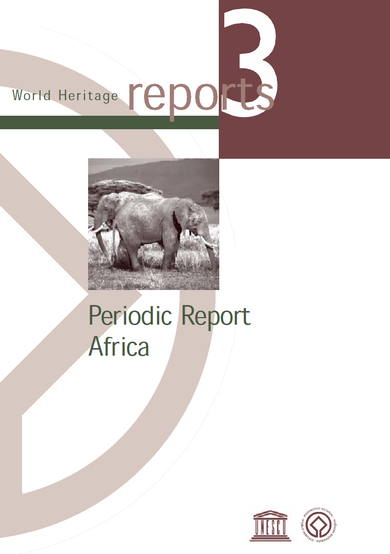Thirty years after its adoption in 1972 and ratification by 175 States Parties, the Convention for the Protection of the World Cultural and Natural Heritage remains a major international legal tool which has enabled 721 sites to be inscribed on the World Heritage List. It ensures the current protection of that heritage so that the achievements of the past may be passed down to the generations yet to come.
To date, 37 out of the 51 African countries have signed the World Heritage Convention, and 23 countries have set up a system whereby 57 African sites have been inscribed on the World Heritage List.The exceptional nature of the African heritage, of its forms and representations requires not only that different periods in history be taken into consideration, but also that its special features be identified and defined in the complementarity and continuity of nature and culture.
In a difficult socio-economic context, the African, and indeed World Heritage, cradle of the history of humanity, is facing various dangers and pressures which threaten the sites and sometimes cause them irremediable damage. As early as 1972, the World Heritage Convention warned of the pressures to which the sites were subject and underlined the need to integrate heritage conservation into the development process. By ratifying the Convention, each country commits itself to its implementation, by adopting policies and plans for setting up a framework for the protection and conservation of its heritage, particularly the sites inscribed on the list.
The 29th General Conference of UNESCO invited the States Parties to the World Heritage Convention, in application of Article 29 of the Convention, through the intermediary of the World Heritage Committee Secretariat, the UNESCO World Heritage Centre, "to report on the legislative and administrative provisions and other actions which they have taken for the application of the World Heritage Convention, including the state of conservation of the World Heritage properties located on their territories". Supported by the 11th General Assembly of States Parties to the World Heritage Convention, periodic reporting on the implementation of the World Heritage Convention and the monitoring of sites inscribed on the World Heritage List has been organized.A "voluntary contribution of the States Parties to the 1972 Convention", the periodic reporting process has been carried out according to the strategy adopted and approved by the World Heritage Committee at its 22nd session. It concerns all countries that inscribed sites on the World Heritage List before 1994.
The 29th General Conference of UNESCO invited States Parties to the World Heritage Convention to submit periodic reports, in accordance with Article 29 of the Convention. Following this decision, which was upheld by the 11th General Assembly of States Parties, the World Heritage Committee at its twentysecond session (1998) adopted a general reporting form with submission of periodic reports every six years in the framework of a region by region examination of States Parties' reports.The strategy for periodic reporting from Africa was adopted by the World Heritage Committee at its 23rd session (Marrakech, Morocco, 1999), according to a two-year programme.
Table of Contents
CHAPTER 1: Modalities,the periodic reporting exercise
CHAPTER 2
Section 1: Implementation of the Convention by the States Parties
1. Identification of the properties
2. Legal and institutional framework
3. Training
4. International cooperation and fund raising
5. Education, information and awareness building
Section 2: Implementation of the World Heritage Convention at the site level
1. Identification of natural and cultural heritage properties
2. Management of the sites inscribed
3. Factors affecting the sites
4. Preventive conservation and monitoring
CHAPTER 3: conclusions and recommendations
APPENDIXES
Sites and States Parties that participated in the first Periodic Reporting Exercise
Brief descriptions of the sites concerned by the first Periodic Reporting Exercise











